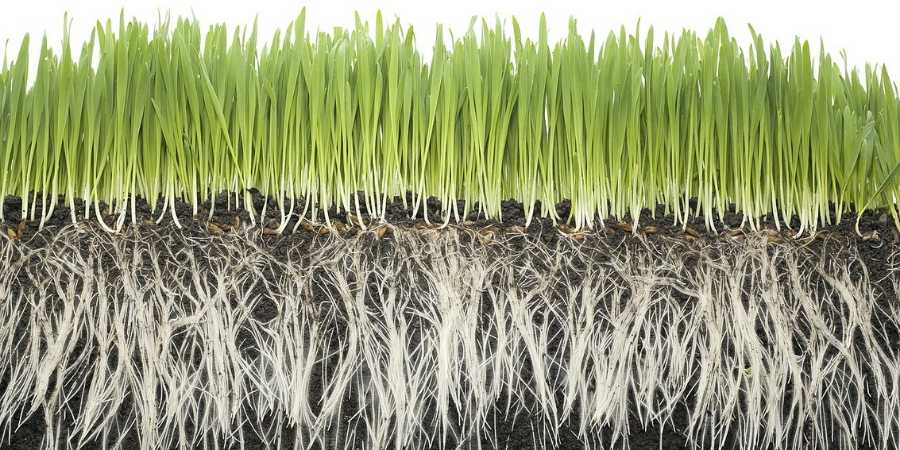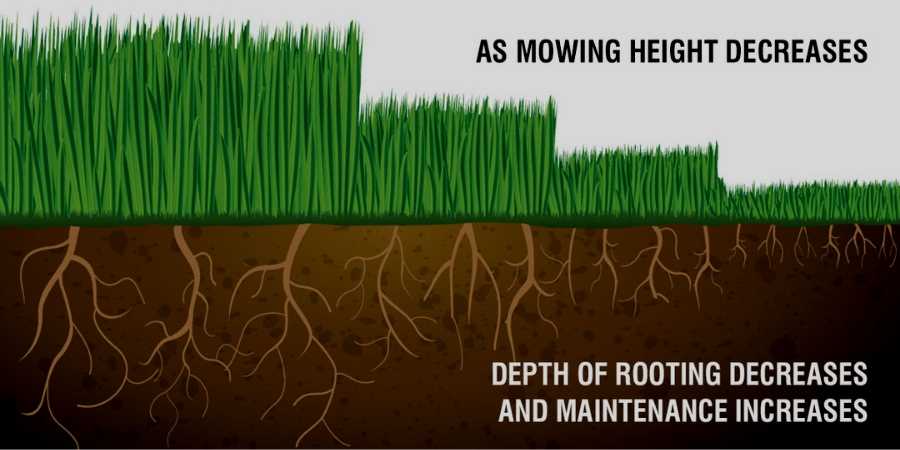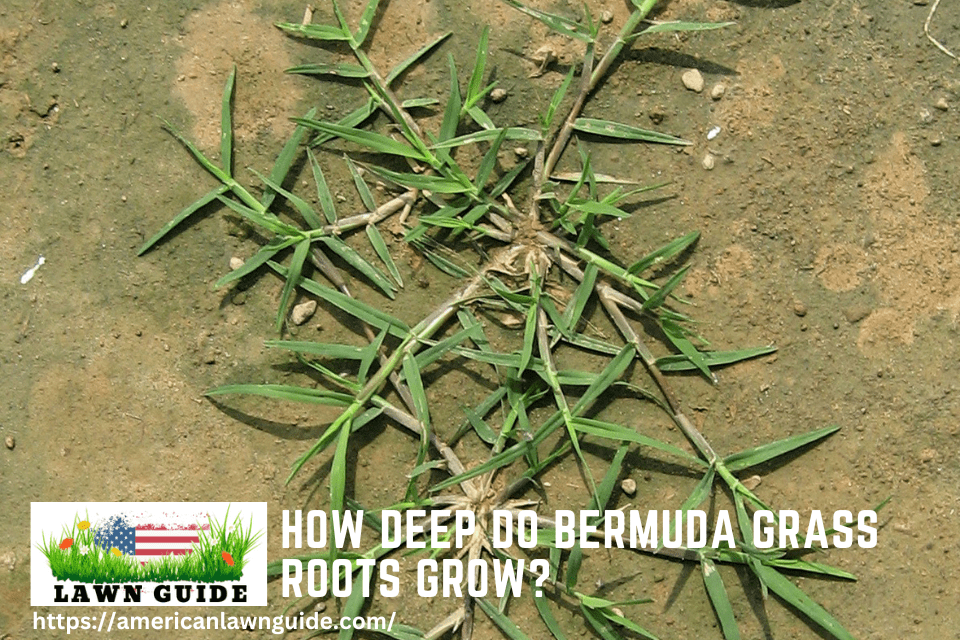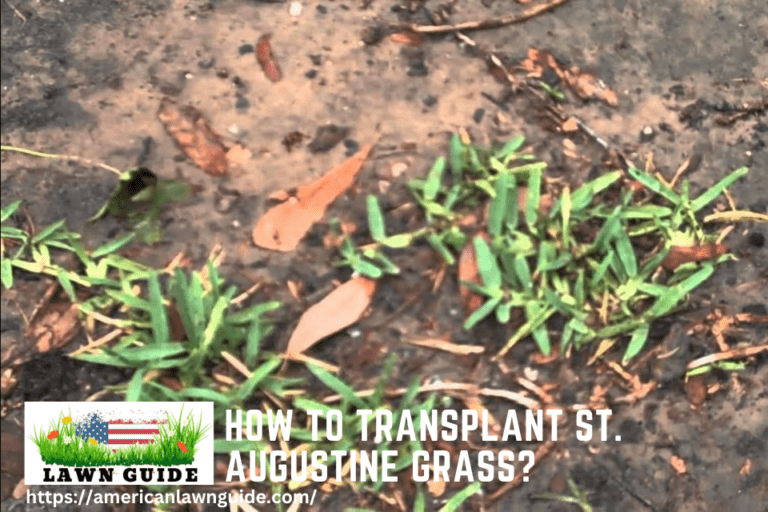Bermuda grass roots typically grow 6 to 24 inches deep. They can sometimes reach up to 6 feet under optimal conditions.
Bermuda grass is a popular choice for lawns due to its durability and lush appearance. Its roots play a crucial role in its resilience. Deep roots help the grass withstand drought and high foot traffic. Understanding the depth of Bermuda grass roots can aid in proper lawn care and maintenance.
Deep watering and aeration promote healthy root growth. This grass thrives in warm climates and full sun. Proper care ensures a dense, green lawn that enhances any landscape. Regular mowing, fertilizing, and watering are essential for optimal growth. Knowing these basics helps keep your Bermuda grass lawn vibrant and healthy.

Root Characteristics Of Bermuda Grass
Bermuda grass is known for its robust root system. This grass is popular for lawns and sports fields. Understanding its root characteristics can help in maintaining a healthy lawn. Let’s dive into the details.
Average Depth In Ideal Conditions
In ideal conditions, Bermuda grass roots can grow deep. Typically, the roots reach depths of 6 to 24 inches. This depth helps the grass access more nutrients and water.
Below is a table showing average root depths:
| Condition | Root Depth (inches) |
|---|---|
| Optimal Soil | 18 – 24 |
| Average Soil | 12 – 18 |
| Poor Soil | 6 – 12 |
Factors Influencing Root Growth
Several factors influence the growth of Bermuda grass roots. These factors include:
- Soil Type: Sandy soils promote deeper roots.
- Watering: Deep, infrequent watering encourages root growth.
- Climate: Warmer climates support better root development.
- Fertilization: Proper nutrients boost root health.
- Compaction: Aerated soil allows roots to grow deeper.
Understanding these factors helps in achieving a lush, green lawn. Bermuda grass thrives with the right care. Ensure to monitor these conditions closely.

The Anatomy Of Bermuda Grass Roots & What Does it Look Like?
Bermuda grass is a popular lawn choice due to its durability. Understanding its root structure helps in proper maintenance. The roots of Bermuda grass are complex and multifaceted. They help the grass thrive in various conditions.
Structure And Function
The roots of Bermuda grass have two main parts. These are the primary roots and the secondary roots. The primary roots grow directly from the seed. They absorb water and nutrients from the soil. The secondary roots, or adventitious roots, develop from nodes on the stems. These roots help the grass spread and anchor firmly in the ground.
Comparing Rhizomes And Stolons
Bermuda grass spreads through two structures: rhizomes and stolons. Rhizomes are underground stems. They grow horizontally and produce new shoots and roots. Stolons are above-ground stems. They also spread horizontally and create new plants. Both structures enable the grass to cover large areas quickly.
| Feature | Rhizomes | Stolons |
|---|---|---|
| Location | Underground | Above ground |
| Function | Spread and anchor | Spread and anchor |
| Growth | Horizontal | Horizontal |
Both rhizomes and stolons play a vital role. They help Bermuda grass spread and establish a dense lawn. This makes Bermuda grass resilient and easy to maintain.
Maximizing Root Depth
Understanding how deep Bermuda grass roots grow is essential for a lush lawn. Deep roots make the grass more drought-resistant and hearty. To achieve this, focus on proper care techniques.
Proper Watering Techniques
Watering correctly is crucial. Bermuda grass needs deep watering but not frequent watering. Water the grass deeply once or twice a week. Aim for about 1 to 1.5 inches of water each time. This encourages roots to grow deeper into the soil. Avoid shallow watering, which keeps roots close to the surface.
The Role Of Fertilization
Fertilization is key for root growth. Use a balanced fertilizer to provide essential nutrients. Apply the fertilizer during the growing season. Nitrogen, phosphorus, and potassium are vital for root development.
| Nutrient | Role |
|---|---|
| Nitrogen | Promotes leaf and root growth |
| Phosphorus | Encourages strong root development |
| Potassium | Boosts overall plant health |
Soil Quality And Aeration
Good soil quality is essential for deep roots. Check the soil pH level and aim for a range of 6.0 to 7.0. Bermuda grass thrives in well-drained soil.
Aerate the soil to improve its quality. Aeration helps water and nutrients reach the roots. It also reduces soil compaction. Perform aeration once a year, preferably in the spring or fall. This process encourages deeper root growth.
By focusing on these techniques, you can maximize the depth of Bermuda grass roots. This will result in a healthier, more resilient lawn.
Implications Of Root Depth
The root depth of Bermuda grass significantly impacts its overall health and maintenance. Understanding how deep Bermuda grass roots grow can help you make better decisions for your lawn care. Let’s explore the implications of root depth on drought resistance and turf health.
Drought Resistance And Survival
Bermuda grass roots can grow up to 6 feet deep in optimal conditions. This deep root system allows the grass to access water from deeper soil layers. As a result, Bermuda grass shows high drought resistance. It can survive longer periods without rainfall.
Deep roots help the grass stay green and lush, even during dry spells. This makes Bermuda grass an excellent choice for areas with inconsistent rainfall. Lawns with deep-rooted Bermuda grass need less frequent watering. This saves time and resources for homeowners.
Impact On Turf Health And Maintenance
A deep root system contributes to the overall health of Bermuda grass. Healthier roots mean stronger and more resilient turf. The grass can better withstand foot traffic and other stress factors.
With deep roots, Bermuda grass absorbs nutrients more efficiently. This leads to a more vibrant and healthy lawn. Fewer fertilizers and supplements are needed, reducing maintenance costs.
Deep-rooted Bermuda grass also helps in soil stabilization. It prevents soil erosion and improves soil structure. This is especially beneficial for slopes and hilly areas.
| Implication | Benefit |
|---|---|
| Drought Resistance | Less frequent watering needed |
| Overall Health | Stronger and more resilient turf |
| Maintenance | Reduced need for fertilizers |
| Soil Stabilization | Prevents soil erosion |
Frequently Asked Questions
How Deep Are Bermuda Grass Roots?
Bermuda grass roots can grow up to 6 feet deep.
What Affects Bermuda Grass Root Depth?
Soil type, watering, and mowing practices affect root depth.
Can Bermuda Grass Survive Drought?
Yes, deep roots help Bermuda grass survive drought conditions.
How To Promote Deeper Bermuda Grass Roots?
Water deeply and infrequently to encourage deeper root growth.
Conclusion
Understanding the depth of Bermuda grass roots is crucial for proper lawn care. These roots can extend up to 6 feet deep. Deep roots mean better drought resistance and nutrient absorption. Regular watering and proper fertilization can promote healthy root growth.
Maintain your Bermuda grass well for a lush, green lawn.
{ “@context”: “https://schema.org”, “@type”: “FAQPage”, “mainEntity”: [ { “@type”: “Question”, “name”: “How deep are Bermuda grass roots?”, “acceptedAnswer”: { “@type”: “Answer”, “text”: “Bermuda grass roots can grow up to 6 feet deep.” } } , { “@type”: “Question”, “name”: “What affects Bermuda grass root depth?”, “acceptedAnswer”: { “@type”: “Answer”, “text”: “Soil type, watering, and mowing practices affect root depth.” } } , { “@type”: “Question”, “name”: “Can Bermuda grass survive drought?”, “acceptedAnswer”: { “@type”: “Answer”, “text”: “Yes, deep roots help Bermuda grass survive drought conditions.” } } , { “@type”: “Question”, “name”: “How to promote deeper Bermuda grass roots?”, “acceptedAnswer”: { “@type”: “Answer”, “text”: “Water deeply and infrequently to encourage deeper root growth.” } } ] }



